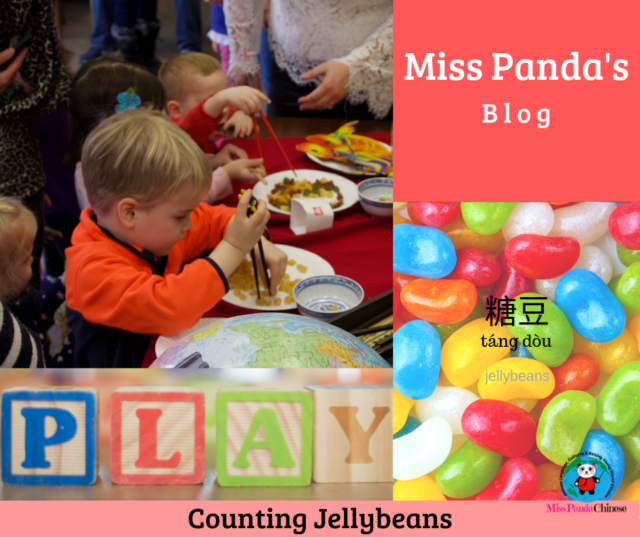Counting jellybeans is a lot of fun for Jay. He first sort out the colors. Then he talks about the favors. He likes fruit so he keeps all the fruit flavored jellybeans on one side.
When his brother joins him Jay starts counting: one jellybean 一個糖豆 yí gè táng dòu 一个糖豆, two jellybeans 兩個糖豆 liǎng gè táng dòu… His little brother corrects him: two is 二 èr. Jay repeats, two jellybeans 兩個糖豆 liǎng gè táng dòu, and he keeps counting.
Jay and his brother are both right about the number “2” in Chinese. There is no grammar involved with the two young boys. Their first language is English and their parents do not speak Mandarin. They have been learning Mandarin for a few months and they have demonstrated a good comprehension of the new language.
When they were introduced numbers in Chinese they first listened to the number song. Then they were introduced the number words in Chinese. After that, they played with the number words with dot markers, pom poms, playdough, stamps, and labels.
When they play the stack the cups game, I count with the number with the coordinating counter word in Chines. They more they hear the target langauge the more they comprehend where and how to use the new expressions and sentences they have acquired.
Jay just mixed up all the jellybeans. He is about to count jellybeans again and this time he is going to use toothpicks and build a 3D structure by using the chinese expressions of nubmers and colors and action words.
Counting jellybeans is more than just learning how to count in Chinese for Jay.
Playing is learning. It is true in learning all subjects.
Children learn as they play. Most importantly, in play children learn how to learn.
O. Fred Donaldson
